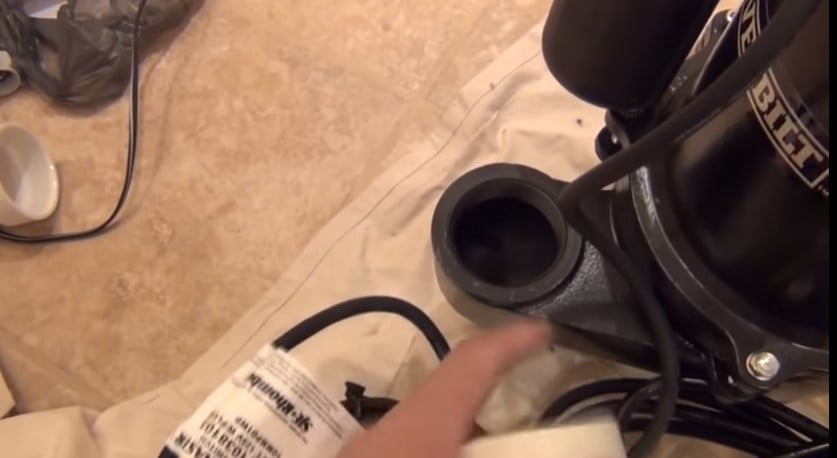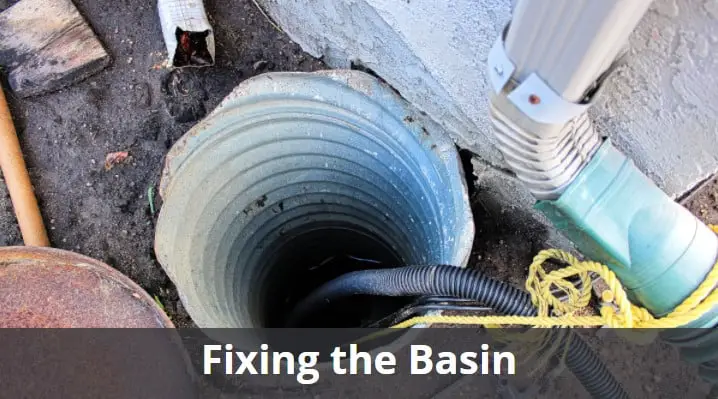Last Updated on July 2, 2023 by admin
Your bathroom and laundry room need a sewer ejector pump to work in a good condition. And you know what, installing one won’t really need a pricey plumber to come to your home. You can manage to do it yourself. Of course, you’ll need some guidelines if this is your first time installing something like that.
Flushing excess water directly is what these pumps need to take care of. And without doing a proper installation you can’t expect it to work well. So, let’s just keep today’s topic limited on how to install sewage ejector pump in basement. That’s usually the common spot to get these things installed.
Table Of Contents
Introduction to Sewage Ejector Pump, Tools Required, Installation Steps & More…

You can surely go and look into some sewage ejector pump installation diagram if pictures make better sense to you. However, the process is not that complicated so you can skip as well.
Before performing the installation there are certain things you may want to know. Also, give extra attention to the purchase whether you are buying parts separately or getting yourself an ejector pump kit.
Purchasing a kit sounds more organized but the price is going to be higher than buying separate parts. Also, the direction provided with kits is more favorable in terms of beginner installation.
What is a Sewage Ejector Pump?
In case you are clueless about this tool, let’s start with a little introduction session. Sewage ejector pumps are basically meant to get rid of any wastewater from the areas below ground.
One common spot is a basement since it uses water supply quite frequently. The sewage line stays above or on the ground in most cases. The water flow is naturally from high to low. And that might result in getting line being absolutely cut off from the basement.
The pump can solve bathroom clogs and messes. Because these use a very heavy-duty power to pump up the main sewage line’s waste. These are a must-have if you own a basement bath or laundry room. You want to install this if:
- There’s solid waste clogging your waster system’s pipelines.
- Overflowing and burst pipe issues are possible.
- Sink and taps show sewage water.
- Chances of flu, food poisoning, and respiratory problems tend to take place.
- You want to reduce sewage gas that causes nausea, annoyance, and pests.
Which Gas Smell in Sewage Water?
Sewage gas is a toxic element that can cause many health issues and irritation to a household. Usually, the hydrogen sulfide gas is known to be the infamous sewage gas.
With a terrible smell, this gas is sourced from the waste material breakdown. The smell is quite similar to rotten eggs. And for many people, this odor brings a great amount of disappointment and in some cases, it’s absolutely unbearable.
The Tools You’ll Need…
To install the sewage ejector pump, you will require some special tools. Now, these tools need your cautious purchasing because the end result will have an impact on it. So, when you are preparing for the installation, make sure you spend right amount of time and money looking for these instruments.
A Quality Vent.
The first tool that you will need is a proper vent. It comes with two functions basically. This tool helps to equalize pressure. By pressure, I mean the one that fills empty spaces with air while pumping water out. So that there is no vacuum created in that area. Also, the vent helps to get rid of any sewer gas from your house area.
Sump Basin to Store the Water.
Before pumping out the sewer water it needs to be stored in a specific area. The sump basin is the part where this water will be held until pumping operation takes place. Once the tank gets full, pumping starts.
Right Size Outlet.
You can avail the outlet with a 2- or 3-inch size. It should be enough wide to handle the pressure created later. Also, the wideness should help in pumping water out.
Check Valve for Safety.
The sewage water might get into your household and create trouble. And to avoid that you will need a check valve. This basically fits right between the sump basin and sewage inlet. It is used to keep the sewage water away from falling back into one’s house.
You will also need some hard hold glue, float switch, sump cover, and fastening or adjustment tools.
Grab Permit Before Starting…
Wastewater will need to drain using the main sewer line in your city or town. And to make that possible you need a permit or allowance from the city’s municipal office.
So before starting the installation, make sure you obtain permit and do things legally. It may cause trouble if you are later caught installing the pump without permission. So, do some finding out for your city’s rules and regulations related.
Fixing the Basin…


The pump needs to fit with basin at the bottom of it. But before that, you need to mount the basin into the floor. Use some hard hold glue to keep leakage worries away. A wobbly or unstable pump may tip and fall once the water hits. So, make sure you attach carefully.
The sump basin needs to be operating with gravity. And so, place it lower than the ground. This will help in draining the wastewater from tank easily.
Fitting the Float Switch…
Use the glue to secure the float switch on pump’s top portion. The trigger should point towards the basin. Make sure you take extra care while fastening the switch. Allow some free rang movements here.
Water will rise up to float switch and turn on the pump. The check valve will suction all waste and drain it. So, make sure the vent outlet stays open. Considering the effluent level, you need to adjust the float switch. The lowest drain inlet should be two inches down maximum from this float switch.
Installing Side Pipeline & Sump Cover…
It’s time to fit the side pipeline. Make sure you attach it securely. Also, check for any leakage by letting water out from the toilet or bathroom. Make additional adjustments if there’s any leakage. Once you finish the installation, fit the sump cover. It should be air and watertight for sure. So that there is no gas seepage.
Install a Sewage Ejector Pump- Fix the troubleshooting
Conclusion
And that was everything you need to know regarding how to install a sewage ejector pump in basement. Make sure you don’t skip any important installation part and avoid being hasty about it. With a little bit of carefulness and time, you can easily try the installation yourself. It’s fun to do things yourself and also saves some additional costs. Good Luck!
